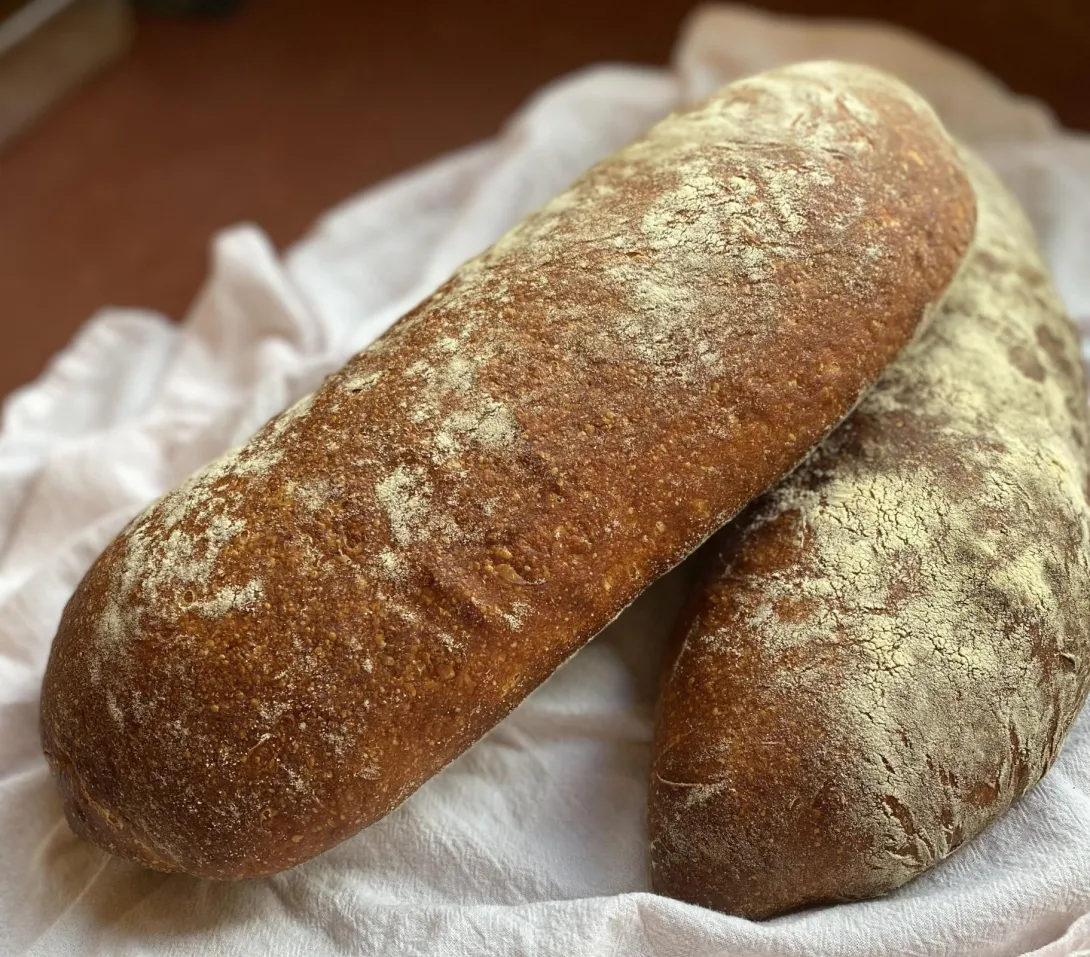
That's a lofty title for a pretty basic post like this. The title actually refers to the name a book. But I'm getting a bit ahead of myself here.
For the past few years I have been fortunate enough to be able to attend the Slow Food Cheese festival in Bra, Italy. It's a biennial event where cheese-makers from all over the world are invited to share (and, yes, maybe sell) their artisan cheese. In 2019, the last time I went, they had a book pavilion where you can purchase many titles about the Slow Food movement. Among the books, tucked away in a corner, I found a book entitled "Il Mondo del Pane," which I translated (with my limited Italian-language knowledge) as The World of Bread.
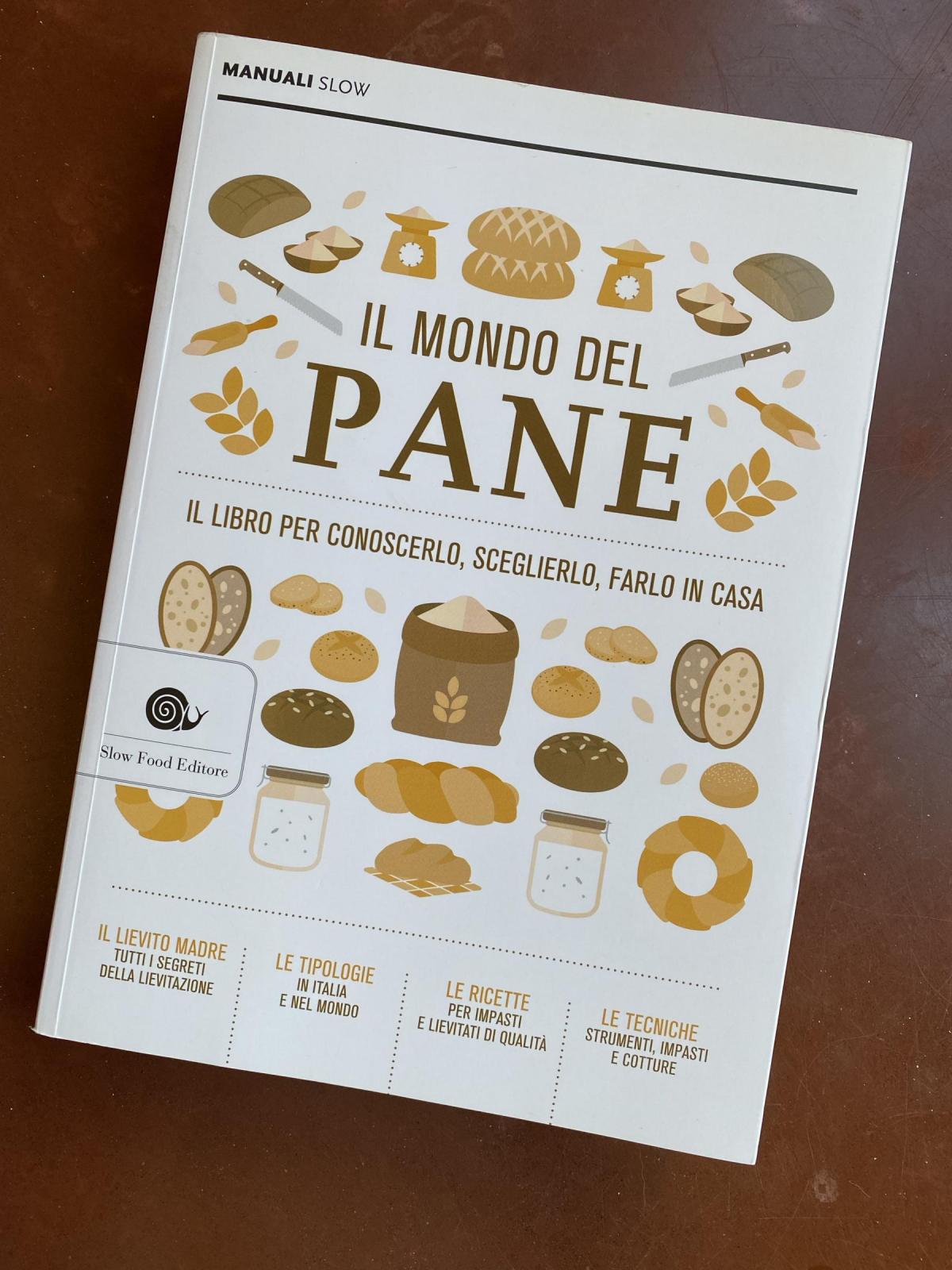
The book is divided into several sections, each discussing different aspects of bread making like flours, methods of leavening, etc., as most bread books are. The largest section has brief discussions of breads from different areas, mostly in Italy, but some from the rest of the world, too. I think what intrigued me about the book was this section, which features a photo of a bread, followed by a description that generally includes the type of flour and leaven used. The breads that are described are not artisan bread, but are your everyday breads from local bakers that are available in each specific region.
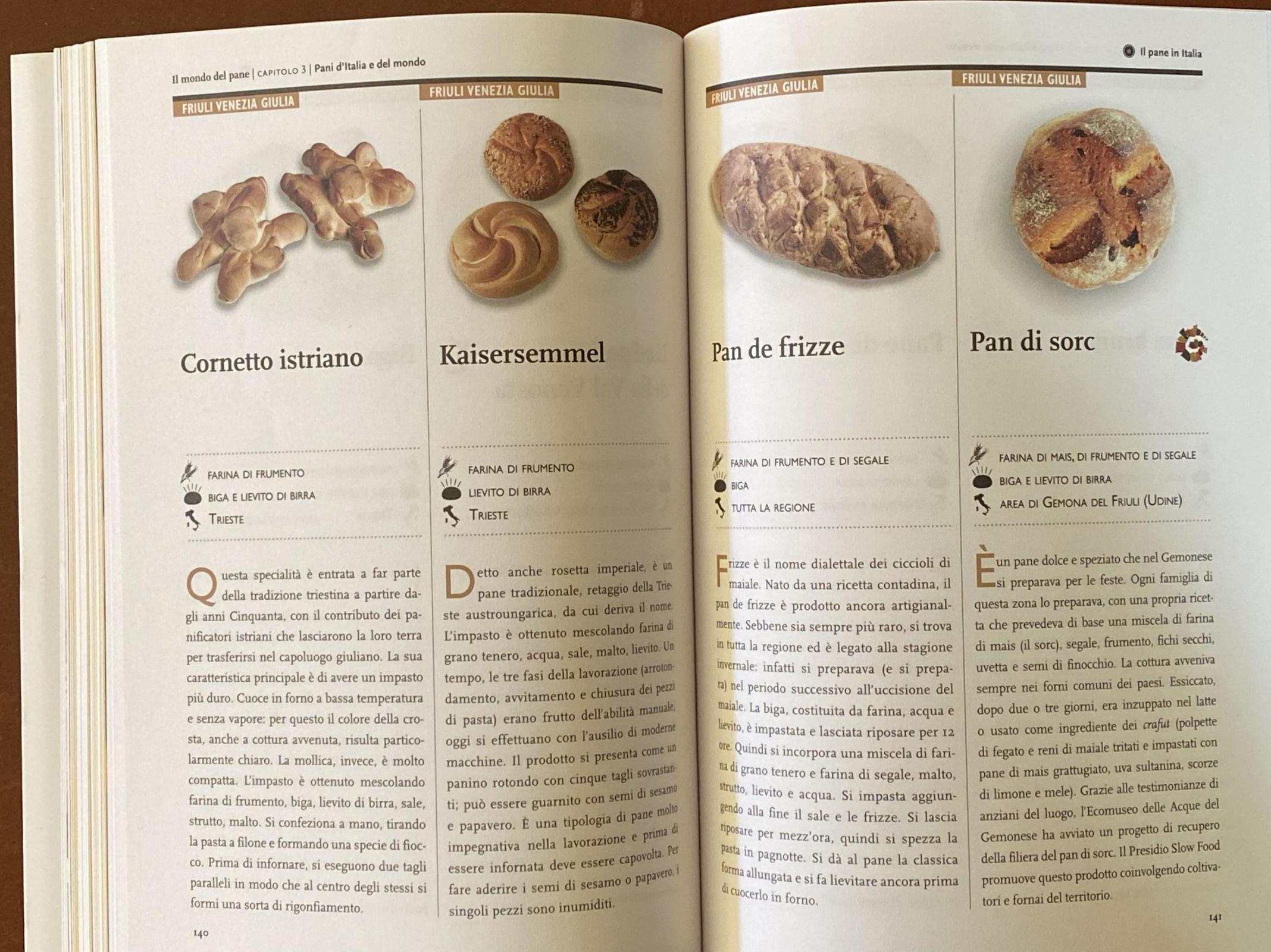
Since I got the book almost 2 years ago, my Italian language reading skills have improved to the point where I can understand much of what is written. I decided to try my hand at making one of the few recipes that are in the book, Pane Pugliese. You may have seen recipes for this bread before. Peter Reinhart has one in his book Crust and Crumb, and a slightly different version in The Bread Bakers Apprentice. Both use a large portion of biga (around 100 bakers-%). In the former he uses 100% bread flour. In the latter, he's a bit more loose suggesting a blend of bread flour and durum flour, ratio unspecified.
For those who don't know (and forgive me if I'm stating the obvious here), Pugliese means "from the region of Puglia," often spelled Apulia in English. It is in southern Italy, the coastal region from the spur to the heel of the boot. There are many famous breads from the region including my favorite, Pane di Altamura, and its very close cousin Pane di Matera (which is actually not in Puglia but right over the border in Basilicata). The predominant grain in the region as in most of Southern Italy is durum wheat, Semola di Grano Duro.
The recipe in Il Mondo del Pane is from the coastal town of Brindisi. It's only 6 sentences long. It calls for 100% durum and a lievito madre (natural leaven) instead of a biga, plus just a pinch of commercial yeast.
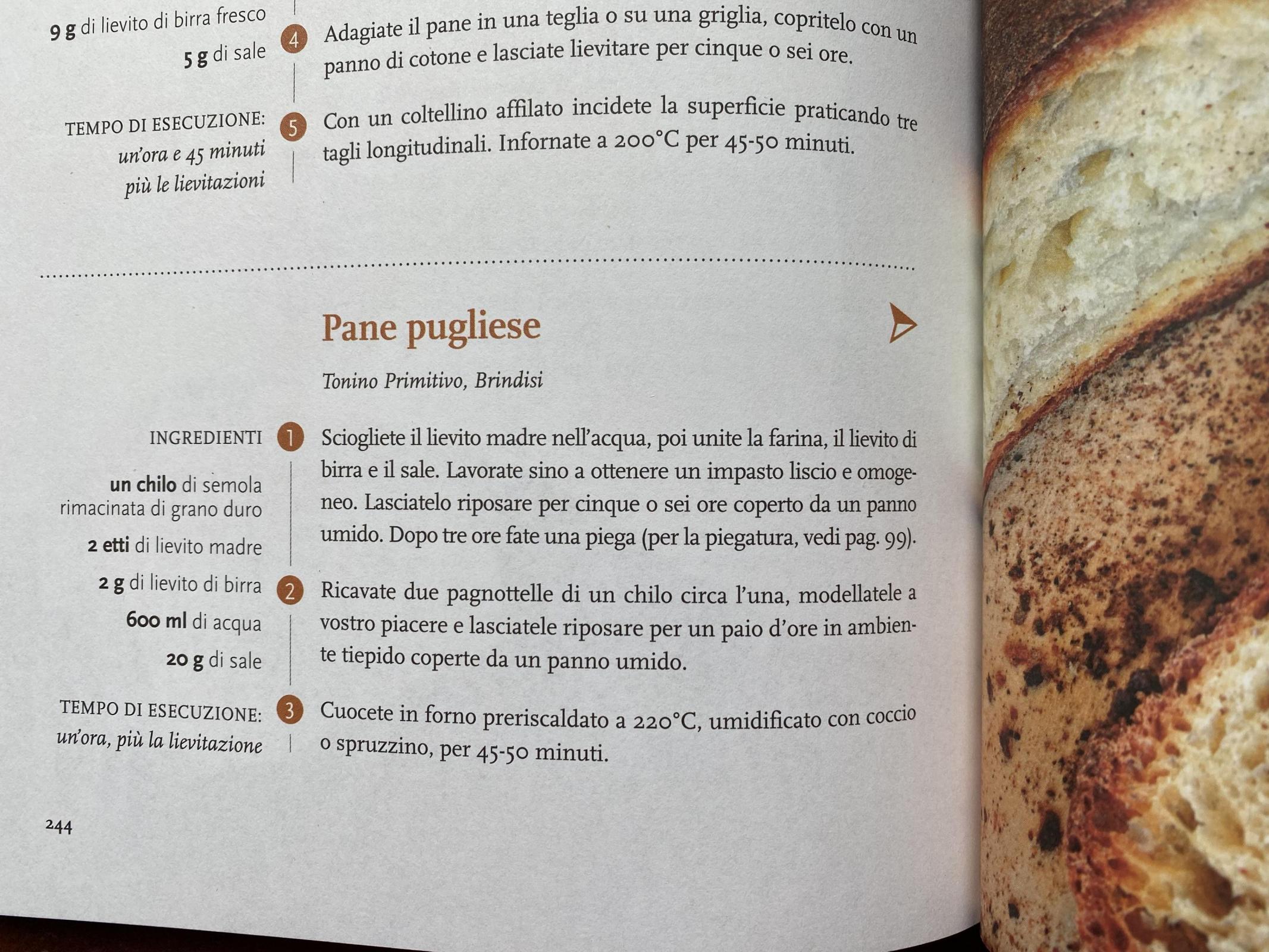
The simple recipe states:
- Dissolve the lievito madre in the water, then add flour, yeast and salt. Work until you get a smooth and uniform dough. Leave to rest for 5-6 hours covered with a damp cloth. After 3 hours perform one fold.
- Divide into 2 pieces about 1 kg each, shape as you like and rest for two hours at room temperature covered with a damp cloth.
- Bake in an oven heated to 220˚C (430˚F), using a clay pot or spraying with water for steam for 45-50 min.

Since the recipe is written for Italian flour, which I have found to be much less thirsty than the Extra Fancy Durum from Central Milling that I use, I adjusted the hydration upwards. The hydration of the lievito madre is not specified, so I randomly chose 100%. I made the lievito madre the previous night using my normal wheat-based starter that I keep at 67%H 1:10:10 and left it to ferment at room temperature for about 12 hours. Although it does not say so, I added an autolyse because EFD behaves much better with a long hydration time, in my experience. I worked the dough in a KitchenAid for about 10 min. using the dough hook and did the bulk ferment at around 72˚F. It makes two loaves which I preshaped gently, rested 15 min. then shaped into logs about 14-inch long. The final proof was at 72˚F, loaves sitting directly on a semolina-coated peel. The loaves baked for about 47 min. in a 430˚F oven on a stone with steam the first 12 min.
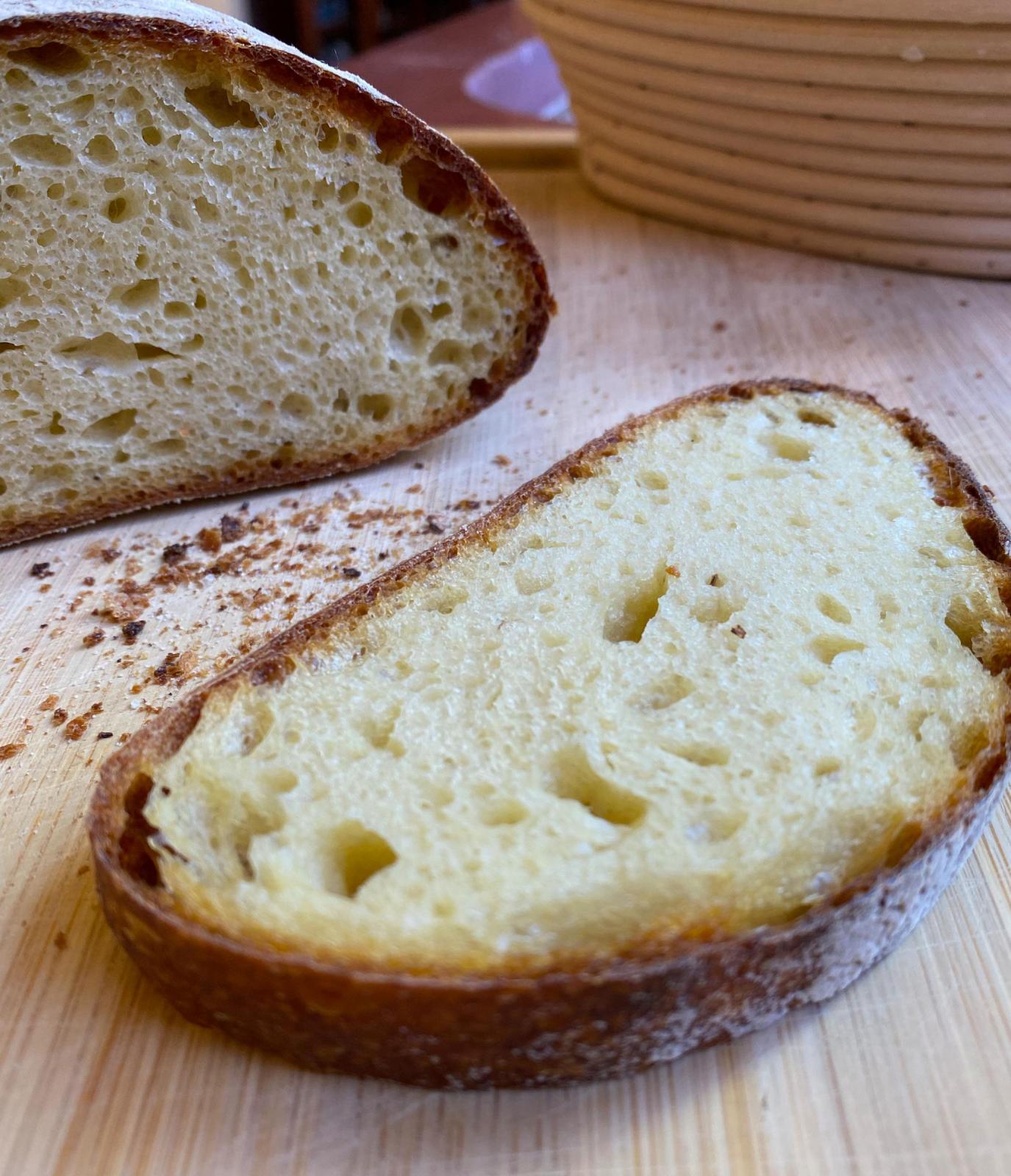
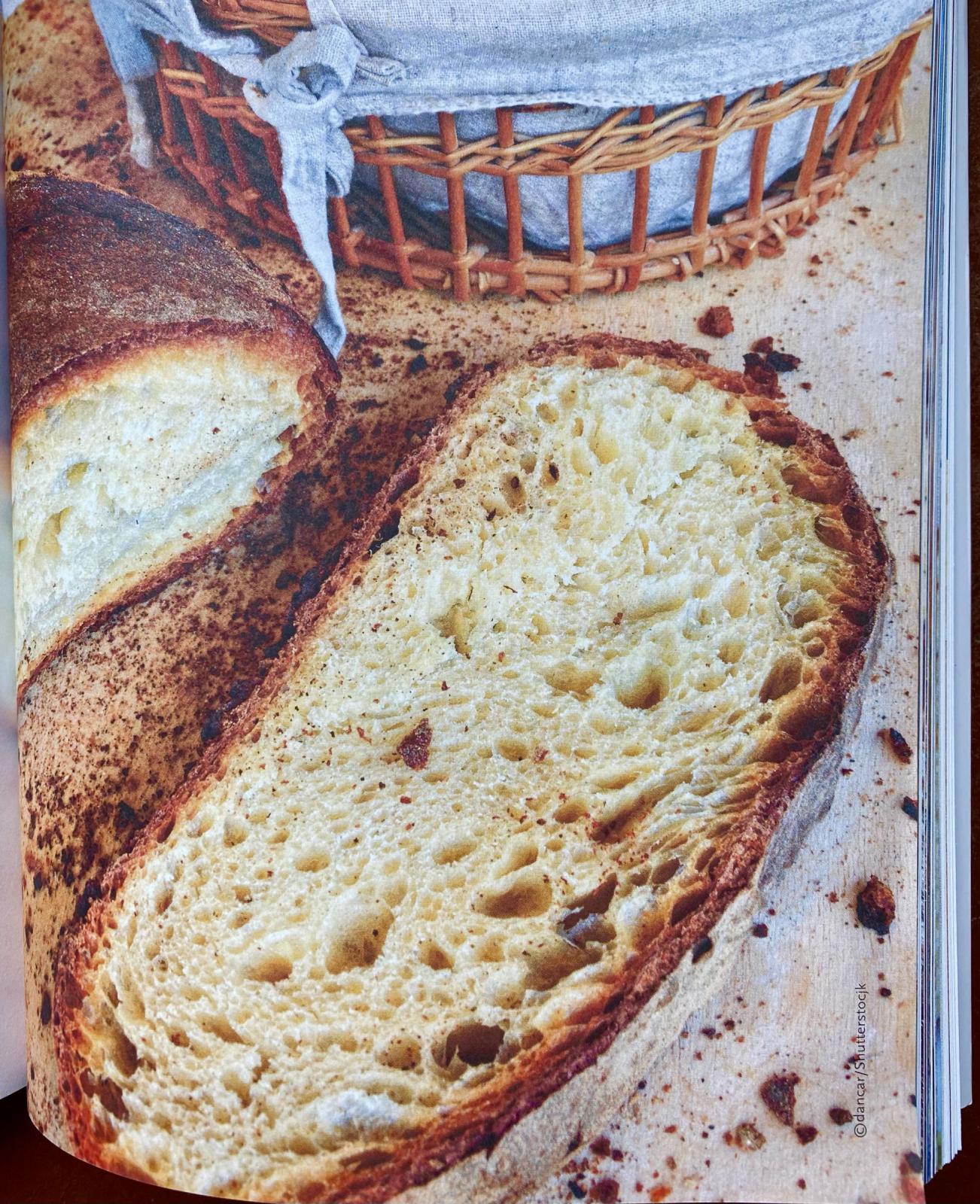
The first cut from my loaf The loaf as pictured in the book
I think next time I will proof it in a couche. I considered it this time but was worried that the dough was too sticky. I shouldn't have worried, though, as an adequately floured couch would have been just fine. In retrospect, I should have baked them a little longer since the hydration was significantly higher than the written recipe, and that would have given a crispier crust. But overall, considering the relatively minimal information I started with, I'm quite happy with the bake.
And not incidentally, it tasted great!
-Brad
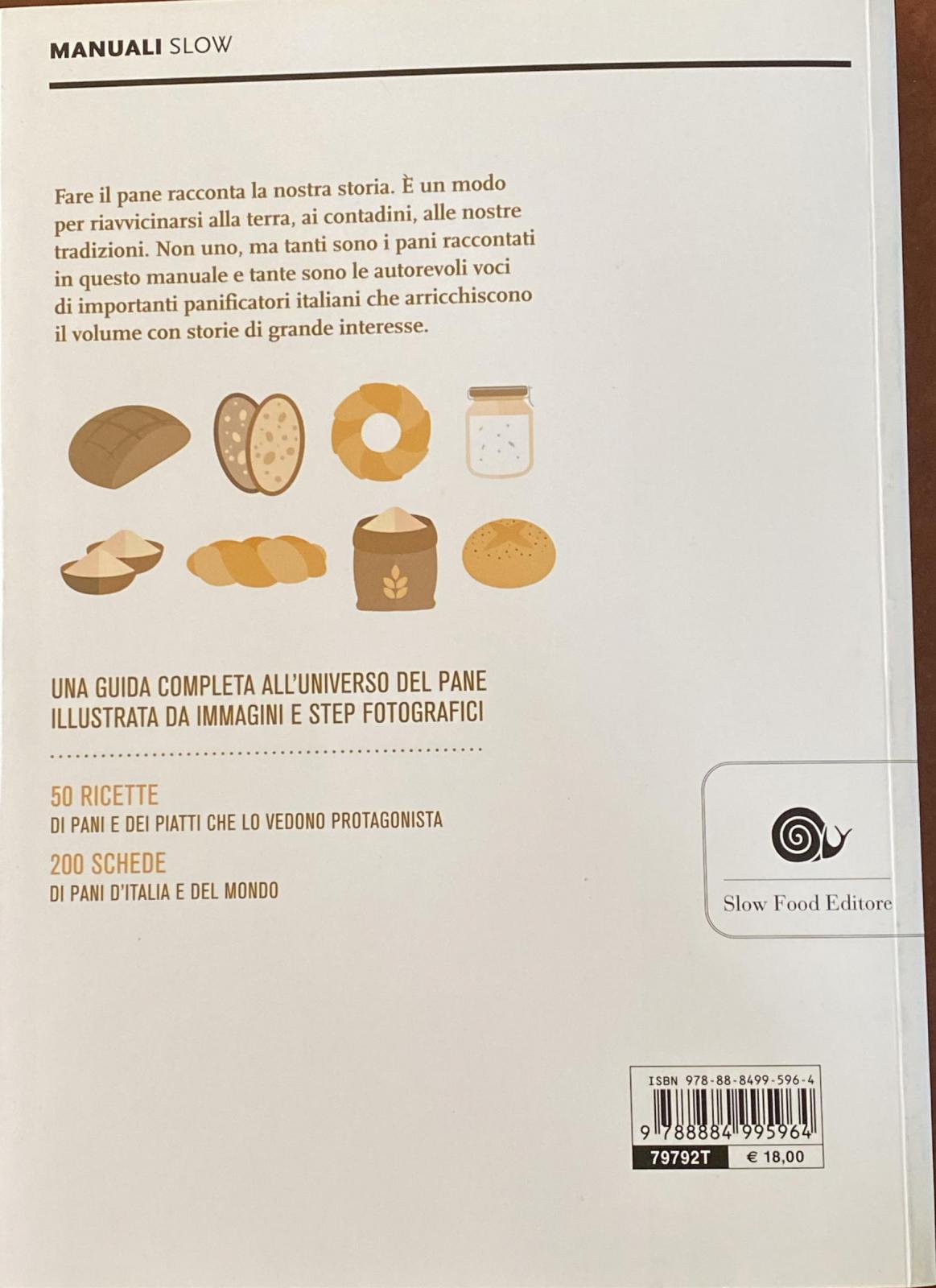
- breadforfun's Blog
- Log in or register to post comments
Very nice Brad, thanks for sharing the formula. I’ve baked a few times with semola rimacinata and I agree with you, the flour really needs a long autolyse, in fact, I do an overnight saltolyse to ensure that the flour has fully absorbed the water. I tend to use a hydration around 80+% and mix by hand. Fully developing the gluten seems to be key for working with durum.
Benny
Thanks, Benny. I always enjoy working with durum flour, it’s got such a nice feel in your hands. This recipe turned out to be quite simple and satisfying. I think the real challenge using this book will be duplicating some of the complicated shapes they describe. Hopefully there will be some videos online for help.
-Brad